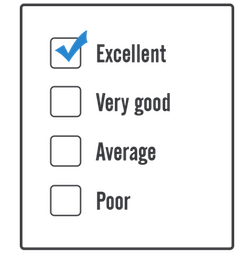I’ve always wondered what would be THE best training plan for my client. I believe it’s one that he or she can :
- actually fit into his or her schedule
- see noticeable benefits from within a reasonable amount of time – both without feeling overworked or exhausted.

This can be easily forgotten in the excitement of creating what seems like a perfectly workable plan to you, as the trainer. But no plan should be formulated without taking into account the client’s individual preferences and tendencies when it comes to working out, not to mention his or her occupation, home life, and other commitments and lifestyle issues that can easily interfere with workouts.
Even having a client fill out a thorough intake questionnaire and/or undergo an in-person consultation and evaluation is no guarantee that the client will be able to complete the workouts he or she might believe possible to fit into a busy schedule. To complicate matters more, what may seem feasible to you as a trainer may prove impractical for your client once he or she begins to log his or her workouts, particularly if that client is training at a distance or not holding every session with you present to oversee and encourage the client through the workout.
Encourage Participation
Using versatile personal training software enables you as the personal trainer and your clients to have an open-ended dialog about what does – and does not – work for the client as an individual. I have found this to be of great value especially in the first month of training, during which I encourage clients to feel free to rearrange their training week after I lay it out as I would ideally plan it.
After they reorganize the week as they see fit, they can request for me to look at the calendar and provide any feedback necessary about what might make sense as far as workout reordering and rest days from a smart training standpoint. But this also gives them an immediate sense of empowerment and freedom to take charge of their own workout schedule, encouraging a sense of agency and participation that a more rigid approach would not allow.
Ask for Feedback
 Supporting my clients’ efforts in make their training calendars feasible for themselves also involves asking them for regular feedback on exercise sessions, noting what does and does not work for them. If a client is completely noncompliant for a given exercise or workout throughout the entire first month, no matter how fantastic or relevant that workout might be from my standpoint, it is clearly not working for the client in question. It’s my job as a trainer to find a way to incorporate a different exercise or workout or to move the exercise or workout to a different day, after discussing the reason for the workout’s being consistently skipped with the client.
Supporting my clients’ efforts in make their training calendars feasible for themselves also involves asking them for regular feedback on exercise sessions, noting what does and does not work for them. If a client is completely noncompliant for a given exercise or workout throughout the entire first month, no matter how fantastic or relevant that workout might be from my standpoint, it is clearly not working for the client in question. It’s my job as a trainer to find a way to incorporate a different exercise or workout or to move the exercise or workout to a different day, after discussing the reason for the workout’s being consistently skipped with the client.
Go Step by Step
With most of my clients training from a distance most of the time, I’ve found that stressing right away to each new client that the first month of training as it’s laid out on the training calendar is open to discussion and reorganization lays the groundwork for a personally empowering situation for that client. I also emphasize the importance of working into the training plan slowly, asking questions as they arise, and resting/recovering whenever necessary in order to avoid overtraining.
 Together, then, we begin a journey of discovering what works best for each new client as an individual, while at the same time, he or she becomes more deeply invested in the process of improving fitness levels or sports performance – or both.
Together, then, we begin a journey of discovering what works best for each new client as an individual, while at the same time, he or she becomes more deeply invested in the process of improving fitness levels or sports performance – or both.
Click here to read PART II.
What are your tips for building a good training plan? Leave your comment below!




